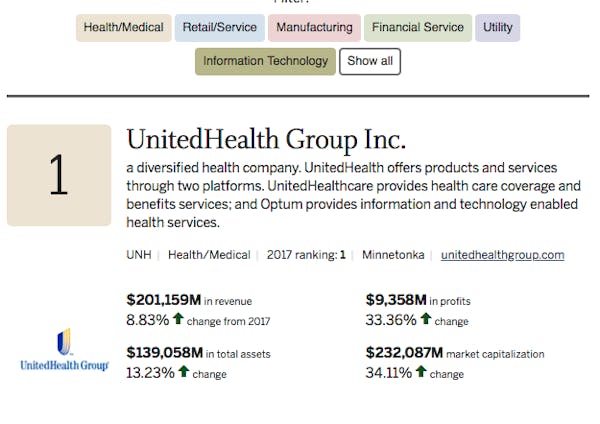Banks are some of the biggest winners in Donald Trump's presidency, benefiting from improved business sentiment and confidence after his election, tax reform at the end of last year and, just a few weeks ago, the termination of some postrecession regulations.
Minnesota's biggest financial-services firms continue to outperform most of their peers around the country. But their investment performance over the past year was shaped more by their individual strategies than the broader tailwinds of the strong economy and favorable political scene.
Shares in TCF Financial Corp. last fall broke out of a narrow trading range they had been locked in since the collapse of the financial industry and recession in 2008. Today, the company's market capitalization is nearly back to the all-time high reached in 2004.
Over the past year, the company's value has risen nearly 70 percent, far outpacing most of the Star Tribune 50, including the three other big financial-services firms, U.S. Bancorp, Ameriprise Financial Services and Piper Jaffray.
Last year, the sector saw the biggest market-cap gain in the Star Tribune 50. But this year, the sector's market cap slipped 1.3 percent, shaped mainly by the 5.5 percent drop in the value of heavyweight U.S. Bancorp, which has a market cap about 30 times bigger than TCF's.
U.S. Bancorp, which owns the nation's fifth-largest bank, is still one of the industry's best performers. This spring, it came under some shareholder pressure as expenses rose and its vaunted efficiency ratio — a measure of its ability to turn resources into revenue — slipped slightly. Executives said it would be stronger the rest of 2018. They attributed higher expenses to spending on technology systems and products. "We are stepping up our business investment in digital-first capabilities," Chief Executive Andy Cecere told investors in April.
Meanwhile at TCF, executives made a timely — though some analysts believe overdue — exit from its national indirect auto loan-origination business. The business had grown to about 20 percent of TCF's loan portfolio, but it yielded smaller returns than other loans. TCF depended on selling chunks of the portfolio annually to generate gains, a strategy that became riskier as interest rates started to rise.
The company, like U.S. Bank and others, has also been whittling down its network of bank branches as consumers do more banking online and through apps on mobile gadgets.
The bank with the most Minnesota assets, Wells Fargo, is one of the state's largest employers but doesn't qualify for the Star Tribune 50 because it is headquartered in San Francisco. Over the past year, the company restructured bank operations after employees were discovered in 2016 to have created phony accounts using customer information to meet internal performance targets. Wells Fargo shares seesawed over the past year but are now nearly flat compared to a year ago.
Evan Ramstad • 612-673-4241
